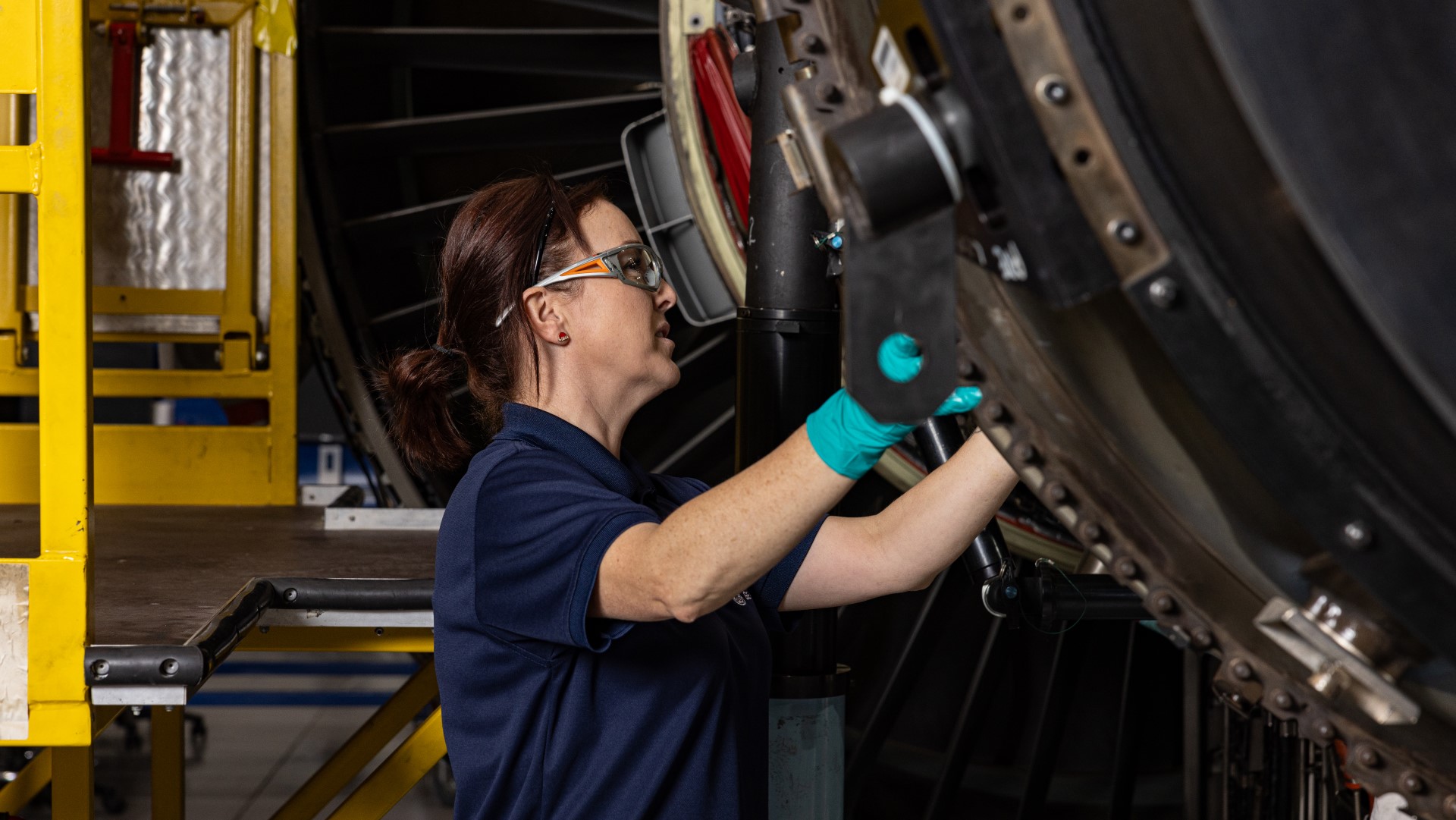It’s been 10 years since the first commercial biofuel flight demonstration. Find out how far the industry has come and where it is heading.
By Dr. Gurhan Andac, Engineering Leader, Aviation Fuels and Additives, GE Aviation
I remember when Sir Richard Branson posed before the cameras with a coconut shell, sipping oil from a straw, in front of a Boeing 747 powered by GE’s CF6 engines. It was publicity for the first flight demonstration of biofuel use for commercial aviation, and it opened the floodgates for questions which are posed to me over and over: “Can we drink biofuels? Aren’t they supposed to be eco-friendly? Hey, Branson drank it; it’s all over the newspapers and the Internet!”
That was ten years ago when it all started—when GE collaborated with Virgin Atlantic Airlines and Boeing to enable this landmark event, in which one of the four CF6 engines was fueled by a blend of 20% ester-based component derived from coconut and babassu oils and 80% Jet A-1. That jumbo jet flew from London to Amsterdam and launched a flurry of aviation-related biofuel activity.
We have come a long way since then. The public now has a better sense of what makes biofuels “eco-friendly” – with potential to have a lower carbon footprint. In fact, among the many reasons why the industry has been pursuing alternative, renewable, sustainable fuels (diversification of supply resulting in less price volatility, reduced dependence on foreign oil resources, etc.), benefit to the environment continues to be the main driver for efforts to transition away from petroleum-based fuels. Although we now know that the specific fuel used for that demo flight is not suitable for aviation, it does not diminish the breakthrough demonstration that airplanes could be flown with fuel blends including synthetically derived components.

Over time, the industry focus has shifted toward fuel production processes that not only result in reduced environmental impact, primarily farm-to-flight net carbon emissions, but also limit adverse effects on the food chain with added social and economic benefits to developing regions due to feedstock cultivation and fuel production. Today there are multiple approved methods to produce synthetic jet fuel with more on the way, which almost gives one the impression that if you tried hard enough, anything could be turned into jet fuel molecules (kerosene-range hydrocarbons). We have the Fischer-Tropsch process that converts biomass, natural gas, and even coal to kerosene by means of catalysts. There is the so-called HEFA process which turns vegetation oil and animal fat into jet molecules. There are genetically-altered bacteria that consume sugar and directly generate hydrocarbons instead of alcohols, as fermentation would normally do. And finally, the alcohol-to-jet process, wherein alcohols are turned into hydrocarbons for blending with jet fuel.
As exotic as these conversion processes sound, the end-product – a final blend of the synthetic component and Jet A/A-1 – is chemically essentially the same as Jet A/A-1, and thus is re-identified as Jet A/A-1. This is commonly referred to as “drop-in” fuel in the industry. It allows the use of the fuel without the need to make any changes to the engine, airframe, and other infrastructure, thus eliminating the need for re-certification of the equipment as they are already certified to run on Jet A/A-1.
The progress has been slow but steady within the first decade. Now that the technical feasibility has been demonstrated, and even production is in place to a certain degree, the rate of transition from petroleum to sustainable fuels will heavily depend on the economic feasibility, i.e., whether the sustainable fuels can be price competitive with conventional jet fuel. This cost question is more challenging for some processes than others; however, as production scale keeps increasing at today’s pace, this economic target will be approached and eventually met. Ten years ago, only a few thousand gallons could be synthesized. Today, with the airline-fuel producer agreements in place, usage could exceed 250 million gallons per year. Although this is still a drop in a bucket compared to worldwide demand, it is a good start. Today, a sustainably fueled flight occurs in essentially every continent, each day. There are global and national carbon incentives for airlines and fuel producers, such as Carbon Offsetting and Reduction Scheme for International Aviation, Renewable Fuel Standard, and Low Carbon Fuel Standard. Military utilization is not an exception either, as evidenced by the US Navy’s allowance of, and even preference for, synthetic fuels – provided that the fuel price is at or below conventional military fuels.

Will sustainable fuels ever completely replace the petroleum-based fuels? It certainly is an ambitious goal with longer-term thinking behind it. Currently, there is no approved fully synthetic jet fuel, although there have been multiple commercial and military demonstrations. However, it is not far-fetched to consider the possibility that one day in the not-so-distant future, certain regions, airports, airlines, or flight routes will solely rely on sustainable fuels.
How will electrically powered aviation technology play into this roadmap? Will the industry ever consider “non-Drop-in” liquid fuels, moving beyond the aviation kerosene experience? These are all good questions with no certain answers at the moment. As we note the 10th year anniversary of the beginning of sustainable jet fuel initiatives, one thing is certain. You might have already flown with a biofuel and did not even know it! You will not feel the difference during the flight. But the environment will know the difference, and that is what we all will surely feel in the future.





